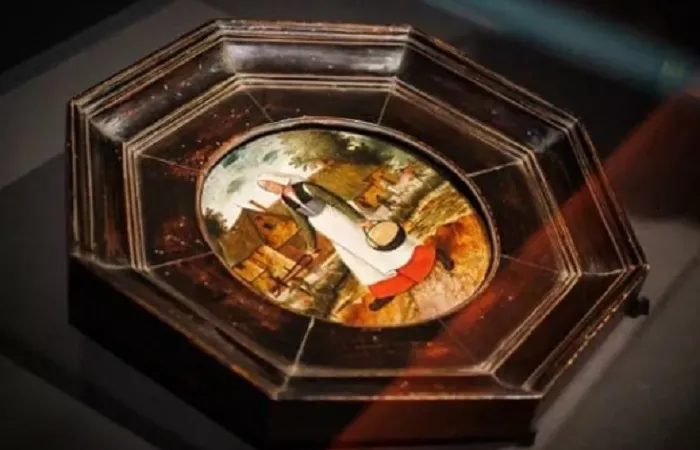A long-lost painting by the Flemish artist Pieter Bruegel the Younger, stolen from a Polish museum in 1974, has been recovered after nearly five decades. The discovery of the masterpiece, believed to have been taken by intelligence agents, was made possible by a private detective and an art magazine. The painting was located at the Gaudí Museum in the Netherlands.
The painting, measuring 17 cm in width, depicts a farmer’s wife holding a bucket of water in one hand and a pot of hot coals in the other. It was originally part of the collection at the National Museum in Gdańsk, Poland. On April 24, 1974, the artwork vanished after a cleaner accidentally knocked it off the wall. When the frame broke, she found the painting had been replaced with a photograph. Another painting, a sketch by the renowned Flemish artist Antonis van Dyck titled “Crucifixion,” was also swapped with a copy.
For years, the stolen paintings remained on Poland’s “most wanted” list, until an article published last year by the Dutch art and antique magazine Vind brought attention to a new exhibition at the Gouda museum. The piece was loaned to the museum by a private collector. The Vind team tracked down a black-and-white photograph of the painting, leading them to contact renowned art detective Brand. After investigating, Brand discovered five similar works by Bruegel and, with assistance from Dutch and Polish authorities, confirmed that the painting at the Dutch museum was indeed the stolen masterpiece.
As a result, Poland has formally requested the return of the artwork. This discovery sheds light on the intricate world of art theft, highlighting the tireless efforts of art detectives and researchers in solving decades-old cases.
In other news, Italian authorities recently uncovered a workshop dedicated to forging famous 19th- and 20th-century paintings, seizing 71 forged paintings and materials, along with counterfeit certificates of authenticity.

